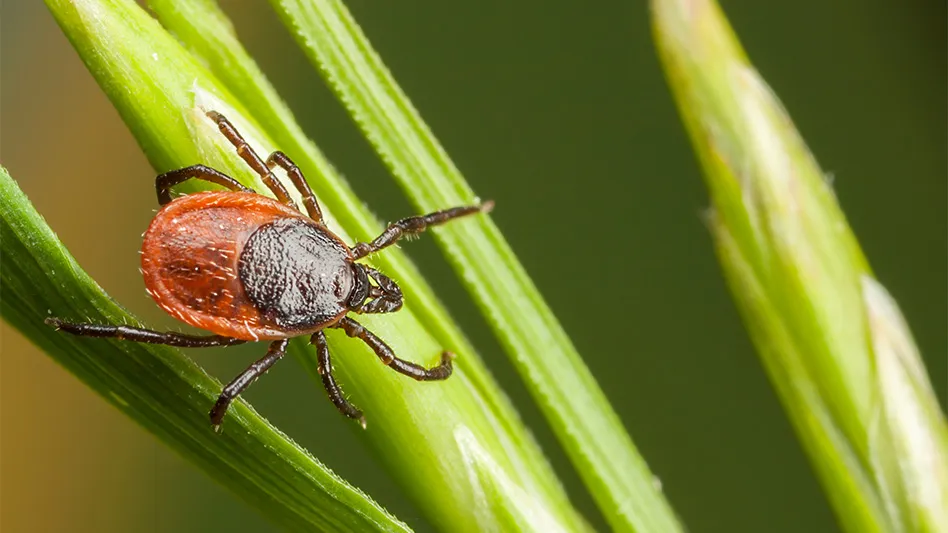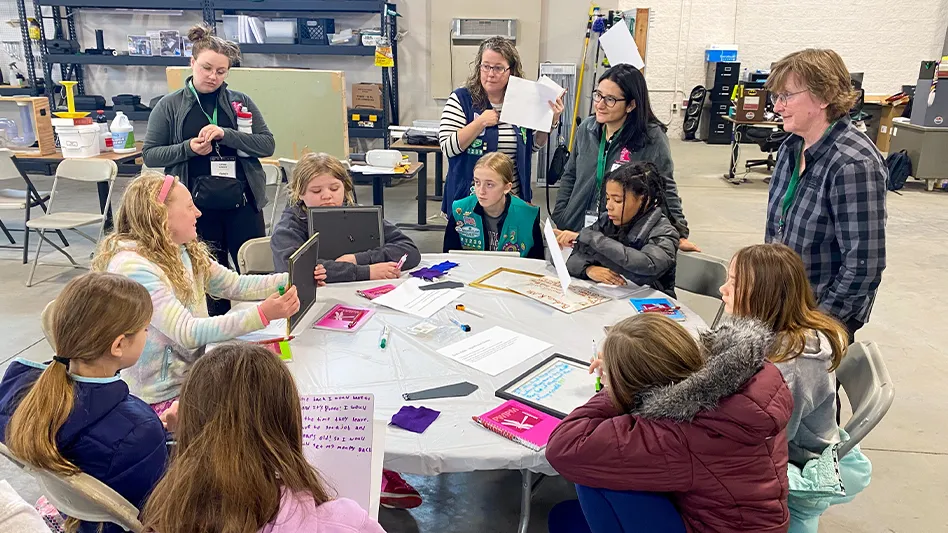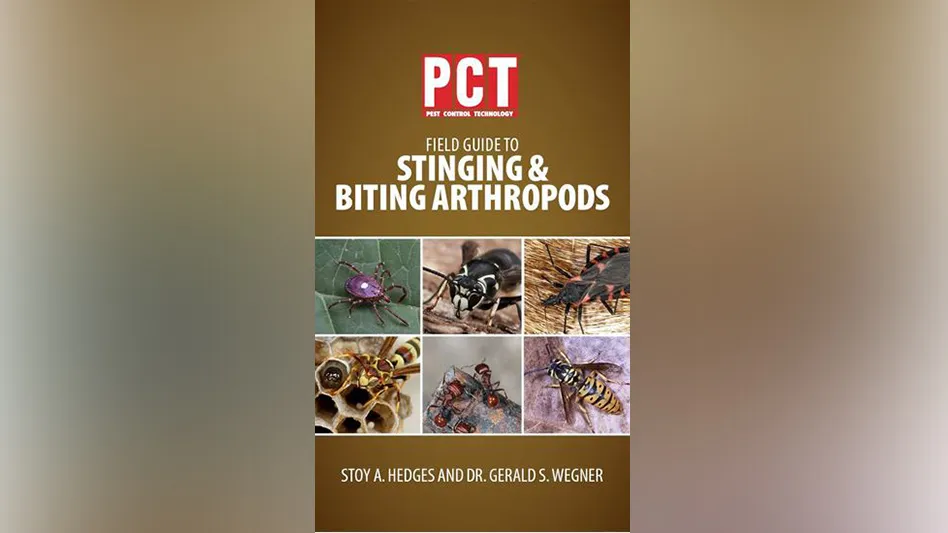Editor’s Note: In this excerpt from the recently published 10th Edition of the Mallis Handbook of Pest Control, Mallis Handbook Contributing Editor Michael Potter, a professor and urban extension entomologist at the University of Kentucky, discusses why conducive conditions are problematic for homeowners and PMPs alike. For more information about the new Mallis book, visit www.mallishandbook.com.
Termite inspections, especially those involving real estate transactions, are the primary source of litigation in the pest control industry. Much of the problem stems from a lack of understanding as to the limits of the inspection. When householders in Kentucky were asked what the consequences should be for missing termites in a real estate inspection, 87% said the company should provide a free treatment or repair any damage; more than half (52%) believed they should do both (see chart below).
Experience has taught — often the hard way — that failure to find termites during an inspection does not necessarily mean that they are not present in the structure. Termites are cryptic creatures and infestations and points of entry can go undetected for years, hidden behind walls, floor coverings, insulation or other obstructions. Masonry units (e.g., concrete block, brick, stone) containing hidden voids, and siding and stucco near or belowground will further hide evidence of termite infestation. Termite feeding and the resultant damage can also progress undetected in wood that is exposed because the outer surface is usually left intact. Needless to say, even the most experienced termite inspector can overlook an infestation or damage that is hidden.
One way to prevent termite damage at your customers’ homes or businesses is to pro-actively address the conducive conditions that so often contribute to termite infestations.
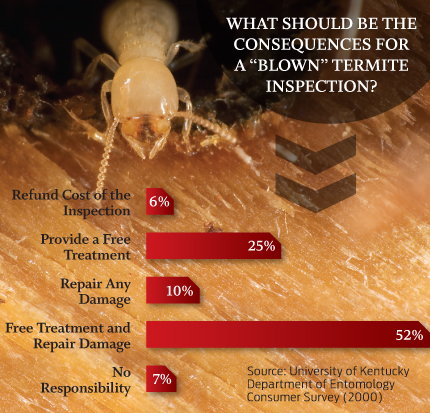
Conducive Conditions. Currently there is no way to make a building “termite-proof.” However, techniques exist — both preventive and corrective — to make structures less vulnerable to termite attack. Termites require food (wood), moisture and shelter for their survival. Any measure that can be implemented to deny, minimize or challenge a termite’s ability to obtain these resources will lessen the threat of infestation. The best time to eliminate “conducive conditions” is during the planning and construction process. Unfortunately, such modifications are often ignored until after a termite problem has already occurred.
Construction alterations are discussed at length in the Approved Reference Procedures for Subterranean Termite Control. Many of the techniques mentioned have been known since the 1930s and ’40s. Less attention has been paid to nonchemical approaches in recent years, due to the industry’s reliance on termiticides. Correcting the termite-conducive conditions mentioned below is often an important first step in long-term prevention and control.
|
What can PMPs do to lessen their liability from termite inspections? It is often said that the best tool against litigation is a well-trained and thorough inspector. When training inspectors, a useful attitude to instill is to approach each inspection as a challenge rather than a routine, and to inspect each structure as if they were going to buy it. How inspections are performed and what is reported varies somewhat from area to area, due to local, state and FHA/VA requirements. The inspector puts his company’s reputation (and checkbook) on the line with each inspection, and the report and graph are the keys to limiting liability. A thorough inspection should be made of all accessible areas where termites are likely to occur. Evidence of live termites, damage and conditions conducive to infestation should be clearly documented in the report. Areas inaccessible to inspection should also be listed and explained. As cautioned earlier, one cannot always assume that an infestation is inactive based solely upon finding dry, vacant shelter tubes. Subterranean termites often abandon tubes during their normal foraging activities, and the possibility of live termites exists whenever there are mud tubes present, regardless of age or condition. Whenever visible evidence of termites is observed, it should be assumed that some degree of damage, including hidden damage, may be present. The extent and significance of termite damage is usually best left for determination by someone with skills in the construction trades. The National Pest Management Association (NPMA) has developed a comprehensive Wood Destroying Insect Inspection Report form (NPMA-33) for use with any FHA/VA guaranteed property transaction. This form reduces much of the ambiguity and potential liability stemming from previous inspection forms, and is required for real estate transactions in most states.
When conducting an inspection, check for excessive mulch and other conducive conditions. |
Wood-to ground contact. Many structural infestations can be traced to contact of wood with the ground. Earth-to-wood contact provides termites with simultaneous access to food, moisture and shelter, as well as direct, hidden entry into the building. Wood siding, latticework, door and window frames, and similar wood elements should be at least 6 inches (15 cm) above ground level. Eliminating wood-to-ground contact may require re-grading or pulling soil or mulch back from the foundation.
Wood posts, stair carriages, door frames, etc., should never penetrate concrete floors; embedded wood members should be cut off at the bottom and supported on a concrete base. Before installing concrete, the embedded wood piece should be removed and the soil treated if termites are evident. Outdoor wood porches and steps should also be supported on a concrete base extending at least 6 inches (15 cm) above grade.
Where wood-to-soil contacts cannot be eliminated, wood should be treated with an appropriately labeled preservative. Preservative-treated wood is not immune to termite attack; termites can still enter the wood through cut ends and cracks and may also build tunnels over the surface.
Wood debris. Cellulose materials on or beneath the soil can attract foraging termites and provide a convenient source of food. Stumps, form boards, grade stakes, scrap wood and lumber, cardboard boxes, and newspapers should be removed from under and around the building. No wood, cardboard or paper should be buried in any of the fills during the construction process. Firewood, landscape timbers, compost piles and other cellulose materials should never be stored against the foundation, and should be moved as far away as practical. Stacked against the foundation, these materials offer a hidden path of entry into the structure and allow termites to bypass any termiticide treated soil that is present.
Moisture-related conditions. Moisture is arguably the most important factor in where termites occur around buildings. Subterranean termites are attracted to moisture and are more likely to infest and persist in a structure if the soil or wood is consistently moist. Rain seepage, drainage problems, plumbing leaks, wood-to-earth contacts, external insulated finish systems (EIFS), condensation and poor ventilation can supply all the moisture needed for satellite clusters of termites to survive and multiply above ground.
The soil adjacent to the foundation should be graded (sloped) so that surface water drains away from the building. The same is true for patios, walkways and other slabs abutting the foundation. Water should be diverted away from the foundation with properly functioning gutters, down spouts and splash blocks. If any of these elements are missing or clogged, roof water will saturate the backfill, creating an environment favorable to termites. Similar problems may result from short roof overhangs, which also allow moisture to enter around windows, doors and siding.
Roof or plumbing leaks can enable subterranean termites to persist above ground with no soil contact. The best way for pest management professionals to detect such leaks is with a moisture meter. Eaves and downspouts connected to storm sewer systems are useful in diverting water, as is drainage tile installed around the foundation perimeter. Blocked drains or sewer lines should be repaired, along with leaking faucets, water pipes and air conditioning units. Lawn sprinklers and irrigation systems should be adjusted to minimize water puddling near the foundation.
Moist or humid crawlspaces also promote termite problems. As a supplement to proper drainage, the exposed soil in crawlspaces should be covered with 4 to 6 mil polyethylene sheeting. The soil cover will act as a vapor barrier to reduce evaporation from the soil and condensation of moisture on joists and subflooring. Typically, about 75% of the crawlspace area is covered, although adjustments may need to be made periodically to maintain a desirable wood moisture level.
Poor ventilation. Providing adequate ventilation should further reduce humidity in crawlspaces. Most building codes call for 1 square foot (0.1 m2) of vent opening per 150 square feet (14 m2) of crawlspace area. For crawlspaces equipped with a vapor barrier, the total vent area often can be reduced, e.g., 1 square foot of vent opening for every 300 to 500 square feet of crawlspace area. One vent should be within 3 feet (1.0 m) of each exterior corner of the building. Placement of vents should ensure adequate cross-ventilation and no “dead air pockets” anywhere beneath the building. Several different types of vents are available; some designs include a motorized fan and ductwork to draw moist, stationary air to the outside. Vents should be kept free of leaves, dirt and debris, and should not be obstructed by vegetation. Vent openings should be screened with 1/4 inch (6 mm) galvanized mesh screen to keep rodents and other animals outside. The frame of the vent should not be in contact with the ground. Where the vents are beneath ground level they should be protected by window casements.
Dense vegetation. Shrubs, vines, trellises, tall grass and other dense vegetation should not be allowed to grow against the siding and foundation. Heavy vegetation traps moisture, which is conducive to termites and wood decay.
Excessive use of mulch. Landscape mulches are routinely used around buildings for their aesthetics and plant health attributes. Mulching benefits ornamental plants by retaining moisture in the soil. A moderate layer of mulch also inhibits weed growth and provides insulation against temperature extremes. From a termite management perspective, however, mulch can be problematic. Experience has long shown that termites commonly forage in mulch beds, presumably because of the moist and moderate conditions mulching affords in the soil below. Cellulose-containing wood and bark mulches were also thought to be a potential food source for subterranean termites, and there has been much speculation as to which types of mulch are more or less attractive.
In one field study, Long et al. examined the relative attractiveness of four different mulch varieties to foraging termites. The researchers found no difference in relative attractiveness of shredded hardwood, miniature pine bark nuggets, shredded eucalyptus bark or pea gravel to termites. Moreover, none of the mulches seemed to increase the rate of initial termite scouting in the mulched area, relative to bare (non-mulched) soil. Laboratory feeding experiments further suggested that bark mulches are of poor nutritional quality to termites and generally will not support their development. Nonetheless, soil temperatures during the summer were found to be cooler beneath the mulches, and moisture tended to be higher relative to bare soil. Most surprising was the finding that pea gravel — widely thought to be less attractive to termites — retained the greatest amount of moisture in the underlying soil, and termites actually seemed to feed more on cardboard monitors located beneath it.
Mulches tend to promote moist, moderate soil conditions that foraging termites prefer. Furthermore, since termites often forage within the mulch layer itself, mulches may serve as untreated “bridges” over termiticide-treated soil. For these reasons, it makes sense to use landscape mulch sparingly, especially if there is an existing termite problem. Where mulch is used, it should be applied to a depth of only about 2 to 3 inches (5-7.5 cm), and should not be allowed to contact wood siding or framing of doors or windows. Contrary to earlier beliefs, crushed stone or pea gravel may afford no significant advantage over cellulose mulches in reducing termite foraging around buildings.
Difficult or unusual construction. Architects and builders seldom give much thought to creating buildings that are less conducive to termites. Certain construction features afford termites’ hidden access to the building, thereby complicating detection and treatment. Dirt-filled porches, steps and similar raised attachments are responsible for a large percentage of termite infestations in homes. Such construction often adjoins the exterior wall of the building above the top of the foundation, bringing soil in close proximity to wooden members. The same is true of attached dirt-filled planter boxes. Planter boxes built on the ground should be separated from the foundation by at least 3 inches (8 cm), and the soil level kept well below the lowest wooden members of the house.
Another termite-conducive condition occurs where there is insufficient clearance between soil and structural wood in a crawlspace. Too little clearance prevents proper inspection and treatment. It is also easier for termites to build shelter tubes between the soil and substructure. A minimum of 18 inches (46 cm) should exist between all horizontal wood members and the ground. Clearance of 24 to 30 inches (60 to 76 cm) is preferred in more humid regions of the country and facilitates regular inspection and implementation of control measures. Soil excavation may be required to create the necessary clearance. Clearance may also be a problem under decks, porches, room additions, and raised wood floors. All inaccessible areas should be clearly noted on treatment graphs and inspection reports.
Stucco extending below grade is another common source of hidden termite entry into buildings, especially in the South. When stucco becomes separated from the foundation wall, termites can tunnel upward between them undetected. “Tapping” the stucco may give some indication if it is hollow below ground. Stucco below grade is a particular problem when affixed to rigid-board foam insulation, essentially creating a hidden, moist “superhighway” for termites into the structure.
|
Termites Big Business for Dodson Dodson Brothers Exterminating Co, Inc., commonly known as Dodson Pest Control, protects its pest control legacy by keeping existing and new customers satisfied with its services. Maintaining that mission requires the most effective and advanced products on the market. Dodson Pest Control’s success shows in the company’s growth. From a single location established in 1944 in Lynchburg, Virginia, the business has expanded to become one of the nation’s largest family-owned pest control companies. It boasts almost 600 employees in 34 locations spread across a sizable section of the Mid-Atlantic states. “People trust the Dodson name,” said CEO Bert Dodson Jr., son of the company’s founder, the late Bert Dodson, Sr. “What differentiates us from our competition is that after we treat a structure, customers do not have to worry about pest problems anymore.” Battling termites is a major part of Dodson Pest Control’s business. They service approximately 60,000 customers annually on termite renewals alone, relying on Termidor termiticide/insecticide to address their customers’ termite problems. The overwhelming majority of these visits involve inspections rather than re-treats. PerimeterPLUS is the brand name for the patented Exterior Perimeter / Localized Interior (EP/LI) treatment uniquely specific to Termidor. PerimeterPLUS describes how Termidor works — use PerimeterPLUS curatively or preventatively to the soil adjacent to the exterior foundation of a building, and use inside structures to target active termite infestations. Before Termidor came on the market, Dodson explained, his company used the traditional “full” conventional treatment process, which included sub-slab drilling. Because PerimeterPLUS is applied to soil around a building, it reduces the need for drilling, which in turn reduces labor costs, material expenses, time on the job and intrusion on residents. It also reduces the number of re-treats compared to termite treatments with competitive products, according to Dodson, who has worked full-time for the family company for 35 years. “In the past, we had issues with re-infestations every spring,” he said. How does it work? First, the PMP uses trenching or trenching and rodding around the exterior foundation to establish a continuous treatment zone in the soil, then uses sub-slab injection or rodding to inject PerimeterPLUS under the concrete structures adjoining the foundation (porches, patios, driveways, sidewalks). The PMP also inspects the building’s interior for termites, applies a localized interior treatment to active areas and then can apply selected treatments to vulnerable areas such as plumbing, bath traps, expansion joints or stress cracks. A growing part of Dodson Pest Control’s commercial business is multi-family housing. Owners appreciate their results verses other companies. “Many apartment-complex owners tell us they’ve used four or five different pest control-companies over the last eight-to-10 years, with little control,” Dodson said. “That’s not good for business, because renters are not happy when they see termite swarms around their apartments. Using Termidor PerimeterPLUS gives us the confidence to guarantee a one-time treatment success for the entire apartment complex.” Dodson also trusts the BASF name, which stands behind the Termidor PerimeterPLUS treatment — today and for years to come. “Termidor has become part of the foundation of our business,” Dodson said. |
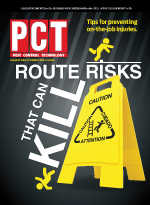
Explore the January 2012 Issue
Check out more from this issue and find you next story to read.
Latest from Pest Control Technology
- Viking Pest Control Organizes a Charity Bike Build for Local Families
- Gaining Control of Structure-Infesting Carpenter Ants
- Big Blue Bug’s Brian Goldman Receives Rhode Island Small Business Person of the Year Award
- UF Researchers Examine How Much Bait it Takes to Eliminate a Subterranean Termite Colony
- Women in Pest Control Group Continues to Grow, Provide Opportunities in the Industry
- NPMA Announces Results of 2024-2025 Board of Directors Election
- Massey Services Acquires Orange Environmental Services
- Hawx Pest Control Wins Bronze Stevie Award for Sustainability

